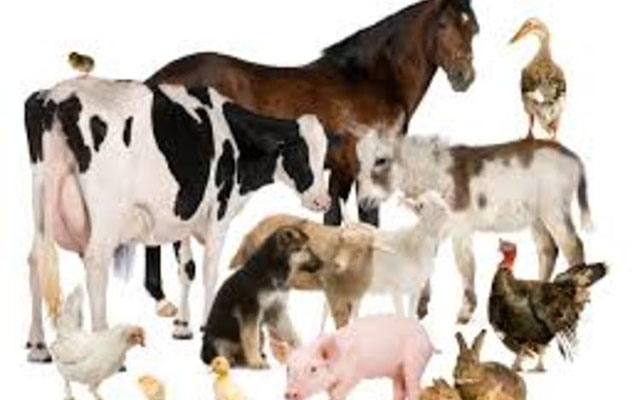
livestock’s
The year 2016 proved to be a rather trying period for the livestock sector. The drought and continued pressure on consumer purchasing power exerted many challenges on all parts of livestock value chains.
Some of the sectors affected in varying capacities include stockfeeds, broiler production, egg production, beef production and milk production.
Stockfeeds
Manufacture of poultry feeds continued to dominate the stockfeed industry and accounted for 68 percent by weight and 74 percent of value of total feeds produced in 2016.
Prices of raw ingredients procured in the fourth quarter of 2016 increased compared to prices in the third quarter. As a result, average broiler and layer feed prices in the fourth quarter were $686 and $481/t, respectively, being four and two percent higher than prices in the third quarter of 2016.
The stockfeed industry continues to express grave concern regarding the ability to service foreign bills to procure essential feed inputs (maize, soya, essential amino acids, minerals and vitamins).
There will be a larger domestic maize crop due to the good rains and the prevailing Grain Marketing Board price of $390/mt. However, the area under soya bean has decreased for the 2016 /17 season and a commercial crop of 20 000mt is projected. This is grossly inadequate given the national demand for soya meal and cooking oil.
Broiler production
Total broiler meat production in 2016, inclusive of production in the informal sector (based on day-old chick sales), was estimated to be 118 000t.
It is also estimated that 70 percent of production was from the small holder sector, where investment in broiler production was suppressed from May to July relative to 2015.
The main issues impacting upon the smallholder producer in 2016 were the shortages of cash (which have since intensified); delays in salary payments for civil servants who form the largest block of formally employed workers in the country and competition from low priced beef on the market due to drought induced de-stocking in the early part of the year.
Large scale broiler meat production trends were similar to those in 2015 and increased to 3 719t in June 2016 before crashing to 2 498t in August. The dramatic fluctuations in formal production can also be partly attributed to “grey” imports over the period April to October.
Producer and wholesale prices remained soft and were seven to nine percent lower than prices in 2015.
Sales and retentions of day old chicks in 2016 was 75 million, being one percent and five percent lower than 2015 and 2014, respectively.
Most of the broiler day old chicks produced during 2016 were from the local breeder sector which witnessed increased local production of hatching eggs of seven percent accompanied by a decreased reliance in imported hatching eggs.
Chick prices continued to decline from a peak of $0,74 cents per chick in June 2015 to $0,61 cents in June 2016 and recovered slightly to $0,63 cents in December 2016.
In the first five weeks of 2017, the broiler market was relatively firm with little to no stockholding. Frozen chicken was retailing at between $3,40 – $3,60/kg. However, it is anticipated that informal live bird sales will undercut the formal market if the recently introduced Value Added Tax of 15 percent on poultry meat is maintained.
Egg production
The egg market witnessed large variations during the year with production reaching a peak of five million dozen eggs in June 2016 only to decline to 4,4 million dozen in December. The market has generally been soft over the past 18 months.
The price per tray of 30 eggs plummeted from $4,35 in March 2015 to $3,05 in November 2015 and averaged $3,18 in 2016. This has triggered massive dis-investment in the egg production by smallholder farmers.
Total layer day old chick sales declined from 3,1 million in 2015 to 1,8 million in 2016. Egg production in the small holder sector which hitherto had increased from 2,2 million dozen in June 2015 to peak at 3,0 million dozen in March 2016, has since declined to 2,2 million dozen by December 2016.
Meanwhile, egg production in the large scale sector increased from 1,4 million dozen in April 2015 to 2,3 million dozen in December 2016 partially offsetting the impact of the decline in smallholder production.
Beef production
The year 2016 had the highest levels of beef cattle slaughters driven by the need to destock due to drought. The poor quality of animals on offer translated to low average carcase weight of only 155kgs.
It is expected that farmers will be offering less cattle to the market during 2017 due to the excellent rains and the need to rebuild herds. The heavy rains, as well as shortage of cash, have also brought other challenges to the cattle trade.
In January 2017, the industry witnessed the lowest slaughter figures in three years primarily due to the incessant rains that have made roads inaccessible and difficulties in effecting payments.
As a result, prices did not fall to traditional January lows. Also due to heavy rains, pen-fattening activities have been severely reduced and supers remain in short supply while economy grade accounted for a disproportionately high proportion of slaughters.
Demand for meat remains soft and margins are very tight due to persistent cash problems and low disposable income. Many value chain participants will find it difficult to break even if VAT on meat is not rescinded.
Milk production
Total milk production in 2016 was 65,4 million litres compared to 57,5 million litres in 2015, an increase of 14 percent. Milk production in 2016 showed a very similar trend to 2015, with two significant dips in production in the months of February and November.
